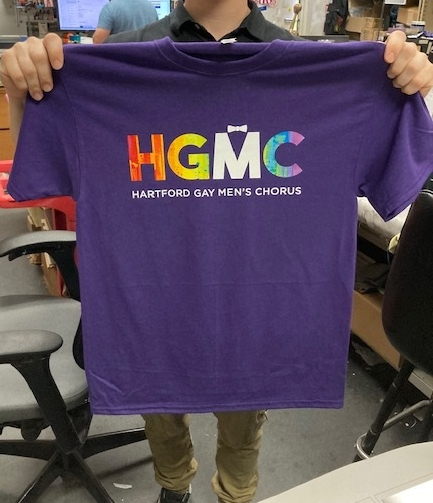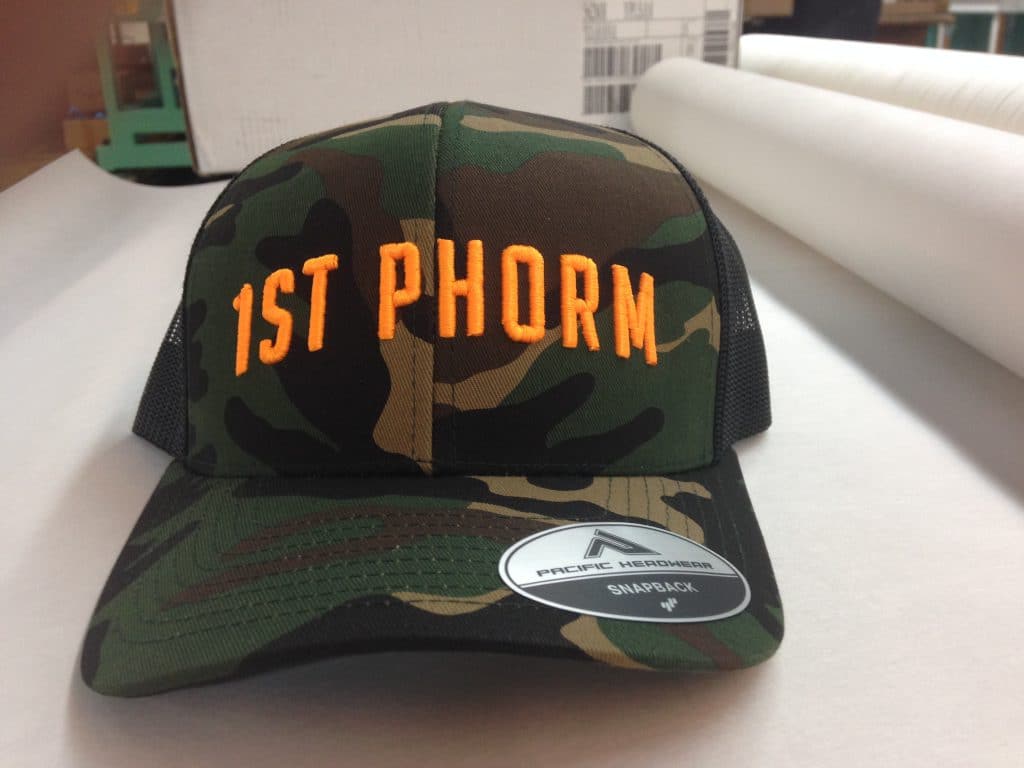While promotional products distributors and apparel decorators work together in the same industry, it’s not uncommon for distributors and related salespeople to be unfamiliar with apparel decoration processes and the nuances that come with them.
From limitations of a garment or design to decoration workflow, understanding the basics can help distributors better manage orders, and their relationship with their contract decorator can flourish.
“There’s a lot of promotional product distributors that come to us and really don’t know much about what they’re doing,” says Alex Fernandez, president at Oakland Park, Florida-based Say it in Stitches, a contract embroiderer. “They just kind of get a customer, and they sell them the sky and the moon, but they don’t know the basics about the apparel decoration process or embroidery as a technology itself.”
This disconnect can cause unnecessary friction between a distributor and their customer, and a distributor and the decorator. Looking to help distributors, Fernandez shares some advice on what to know, and Alex Bowen, director of sales at Cheshire, Connecticut-based distributor Barker Specialty, outlines what it takes to bring decoration in-house.
Decoration Bootcamp
For the purposes of this article, we’ll highlight four popular apparel decorating processes — screen printing, direct-to-film (DTF) printing, direct-to-garment (DTG) printing, and embroidery. They each have their advantages and best use cases depending on the garment, turnaround time, and desired result.
Screen printing offers durable and vibrant prints. It works well on many fabrics, including cotton, polyester, and blends. Stretchy fabrics like athleticwear can be tricky, but with the right ink formulation, it can be done. Specialty ink options like glow-in-the-dark and UV-reactive inks, in addition to 3D options like puff and gel can make a design pop.
This process is ideal for large orders of the same design. Because of the setup costs associated with screen printing — each color in a design requiring a screen — it’s important to weigh that with the volume of the job to decide if screen printing is the best choice. For smaller orders with multi-color designs, digital or transfer decorating processes can fill the gaps.
DTF printing is both a digital printing and transfer process that works for several different fabrics, including polyester, cotton, blends, nylon, denim, leather, and more. Using an inkjet printer, the CMYK design is printed onto a special PET film prior to a white ink layer, and then a special adhesive powder is applied on top, which is then cured. The design is then cut from the sheet and ready for pressing onto the garment.

DTF transfers can fill the gaps for smaller jobs and can handle multiple colors with ease. Unlike screen printing, with DTF, more colors can be added without a concern of added setup cost. DTF can have more of a hand-feel with denser designs.
DTG printing works best on 100% cotton apparel. The process requires pretreatment of the garment, and some equipment and supply manufacturers offer special pretreatment to print on polyester. The less fibrous the material, the better, so high-quality garments are important here. Apparel with coatings like stain resistance and weatherproofing will repel DTG’s water-based inks. Dark-colored garments can be tricky, but with proper pretreatment and a white underbase, vibrant prints on black or dark shirts can be done.
DTG works well for one-off, full-color, and intricate designs, with the ability to create photorealistic images. It’s ideal for small to medium order quantities, depending on a decorator’s production setup.
Embroidery offers a professional look and higher perceived value for brands. Polos, shirts, jackets, hats, and backpacks are just a few of the products that work well for embroidery. Thin materials like rayon, silk, and super thin T-shirts aren’t ideal due to their susceptibility to tear or pucker. While stabilizers can be used to support some woven fabrics, it’s not always feasible. Stitch-dense designs can weigh down knit fabrics, so it’s important to consider wearability.
Good embroidery is about good digitization, converting a PNG or JPG image into a file that can be read by the embroidery machine. While a digitized file might work on a flat sweatshirt, that same file will not transfer over to a curved Dad hat, for example. Distributors and their clients need to understand that edits may be necessary.
With a snapshot of these decoration processes, distributors can begin to learn how different methods, fabrics, and designs do or don’t lend themselves well to one another. They can better serve their clients with less back and forth between all parties.
Working with a Contract Decorator
Asking about his capabilities, Fernandez says he’s more than a contract embroiderer.
Say it in Stitches is “extraordinarily process-oriented” when it comes to managing its orders, he says. His team helps bridge the knowledge gap, guides distributors through the technology, and helps project manage. While contract decorators can educate where possible, Fernandez encourages distributors to become familiar with the “natural lifecycle” of apparel decoration.
“What they need to understand is the process itself, which begins with art, where they ask for a quote; the quote comes back, and I say, ‘This is what it’s going to cost to digitize — to convert that art to an instruction file that the embroidery machine can read — and if you have X many pieces of this type of garment, it’s going to cost you $8 per piece to do the actual embroidery.’”

From there, the shop digitizes the file, produces a sample on scrap fabric, sends it for approval, and then production can start once a purchase order comes through.
Understanding this lifecycle, which doesn’t vary much from decorator to decorator, is key to distributors working more effectively and efficiently, Fernandez says. When he goes back to a distributor several times, it can cause wear and tear on the relationship. For example, he says, “They have to have a logo or a rendition of what the client wants. In other words, they can’t just come to me and say, ‘My client wants a palm tree with the text XYZ underneath.’ No, I need to know what the palm tree looks like. Is it solid? Is it multi-colored? What kind of font is it? Is it two lines of text? Or is it one? They need to come to me with finished art, and so they need to have either in-house graphic art capabilities or somebody they can work with to take the end-user’s concept.”
Also included in the lifecycle, Fernandez adds, is lead times. Distributors need to understand how long it takes to make screens for screen printing, digitize files for embroidery, and print transfers for DTF, for example, so that when a client comes with an order, they can manage expectations. Distributors who manage client projects accordingly, to avoid rush orders, only builds relationship capital, Fernandez notes.
In-House Decoration
So, what if a distributor is thinking about bringing a decoration process in-house? Beyond mastering the craft, Bowen says distributors need to ask themselves:
Is there demand for the decoration method? Will their business model allow them to meet demand? Will it help them be competitive in the market? Do they have the space for equipment, quality control, and packaging? Is there enough volume and staff to sustain it? There’s also the risk in absorbing the cost of error, he adds. If a high-ticket item like a name-brand jacket gets ruined, that’s now the distributor’s responsibility. The decoration is the end of the line before it gets to the end-user. If a decorator, whether in-house or outsource, forgets to take the backing off embroidery or scorches the garments, they take on the cost and risk losing the customer.
“I give contract decorators a huge amount of credit because they really do absorb so much responsibility of every garment that comes through there, every bit of care,” Bowen says.
On the flip side, he says the major pro of bringing decoration in-house is having control over the production process and schedule. Good vendors and decorators get busy, and if a client is on a time crunch, in-house capabilities can save them.
That said, Bowen cautions clients before jumping in: “Don’t do it on a whim. Don’t do it based on feeling. Don’t do it because it’s a good idea and it looks attractive. Do it because it makes sense. You’ve got to make sure that you have the right intention in mind and that you’re not just hopping on a trend.”
He encourages distributors to explore transfers first, something Barker Specialty offers, because of the minimal equipment investment. It’s a great way to understand the decoration workflow. The distributor can then scale it for other processes with a clear standard operating procedure for decorated apparel orders.
For embroidery, Fernandez urges distributors to hire people who know the trade and buy used equipment, ensuring it’s in good working condition. Buying an established embroidery business, albeit pricey, is another good option.
Whether a distributor opts for in-house or outsourced decoration, they can’t let their decoration education fall short. Understanding the nuances of apparel decoration gives them the power to manage orders effectively and cultivate strong relationships with customers and decoration partners alike.

